Elementary finance
What is an investment?
Text
introduction
two basic types of investments
what is investing?
first example
illustration with numbers
second example
more examples
We continue describing the general framework of the course in elementary finance.
We shall study investments. So, what is it?
Of course, we shall study the two basic types of investments which are
- buying machines, or tools, or plants...
- buying financial securities (shares of stock of a firm, bonds, insurance policies, etc.)
But it is useful to see investments in general from a higher viewpoint.
Investing is relinquishing (that is, postponing) consumption, which could take place today, in order to produce value in the future, which can be consumed or otherwise used then.
Therefore time plays a fundamental role.
For instance, let's look at a firm which has the following projected cash flows, beginning in one year,
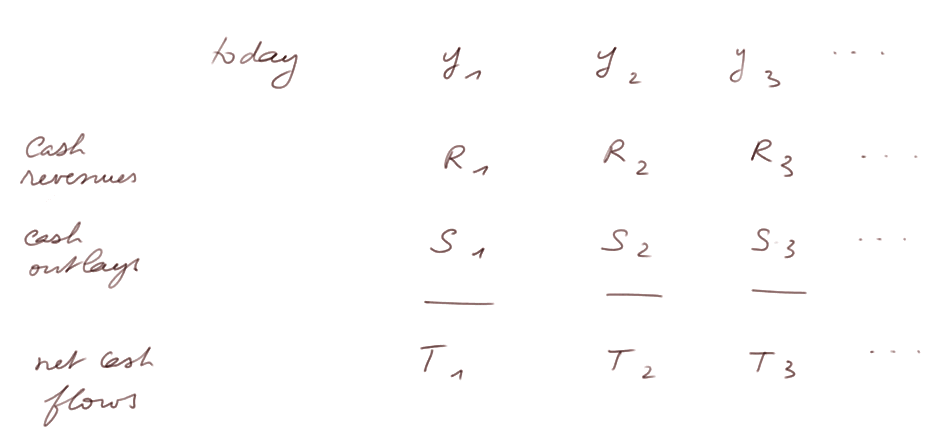
and suppose the firm decides to invest a sum M in machinery, today, in order to reduce the future cash outlays.
Suppose the cash reductions will be ΔS1, ΔS2, ΔS3.
Then the investment can be represented as this:

(Note that cash flow analyses are always done with cash figures. We don't consider amortizations, which are not cash outlays.)
To make the example more talkative, let's put some numbers: suppose we can invest today 100 million € in order to produce 50, 80 and 40 million € over the next three years.
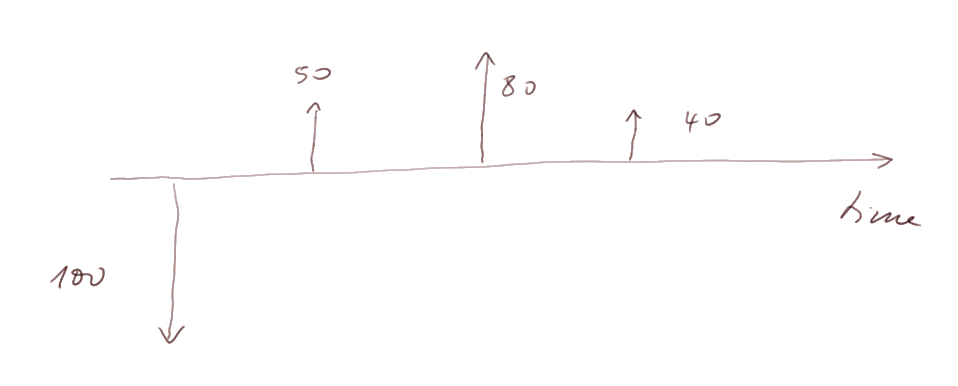
We shall study under which conditions this is a good investment, and under which ones it is bad.
We shall be more sophisticated than just saying: "Well, after year 2, the investment has already paid back for itself". Such a method of evaluation is called the "payback method" of analyzing investments. Though it is not devoid of usefulness, it is too crude, for reasons that will become clear in this finance course.
Rather, for each of the three future cash flows we shall compute its present value (PV) - it will require extra information about the investment and its environment - and we shall then be able to compute the NPV of the investment.
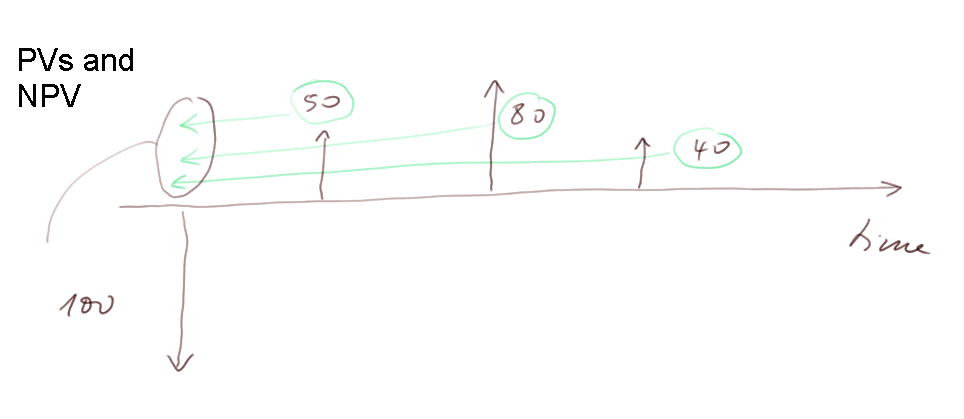
Second example. You have 1000€ in your pocket, and a borrower offers you the following deal:
today you exchange your 1000€ for a promise
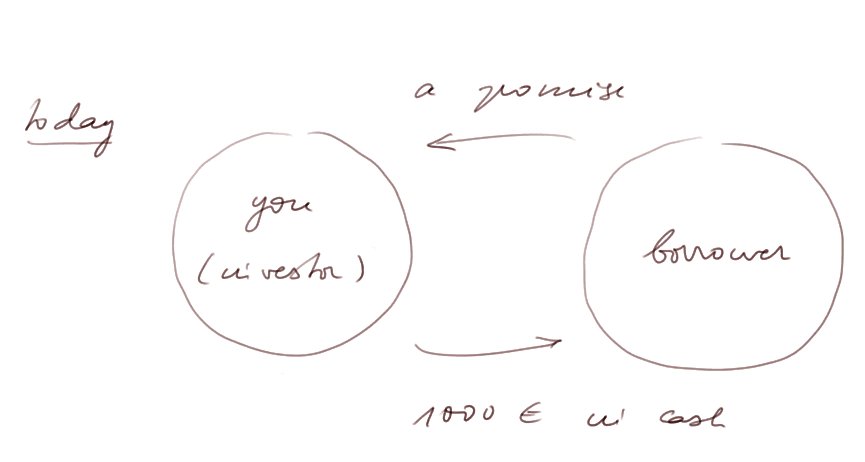
this promise (which is a contract) stipulates that you will receive 50€/year over the next 6 years, and the sixth year you'll also get back 1000€.
So the investment, for you, can be represented as this
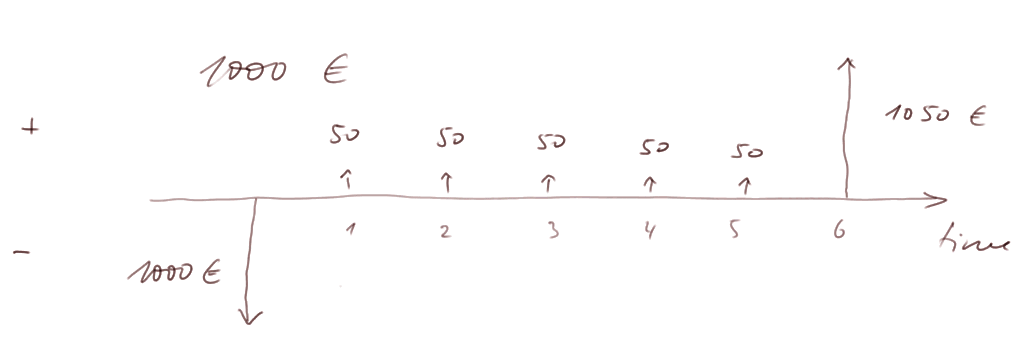
There again, we shall study under which conditions (quality of the borrower, economic environment) this is an acceptable investment.
The contract in this example is called a "bond", because the borrower becomes tied by its promise. And this is the simplest type of bond, sometimes called "plain vanilla". Here it is a 6 year 5% bond.
More generally, promises like that are called "financial securities".
As we said, investing is postponing consumption today, to reap value and consume in the future. Many examples fit this definition:
- studying to get a formation and a degree, instead of partying
- setting aside part of a harvest to plant next crop
- even, storing a harvest for consumption in winter
- it is an investment, although without any particular mechanism of value creation in the future
- buying gold to resell it later
- this may or may not be done with speculation in mind
- rehabilitating an apartment building for rent
- etc.
Screens of the video
|
|
|
screen number display zone |
Course table of contents
Contact